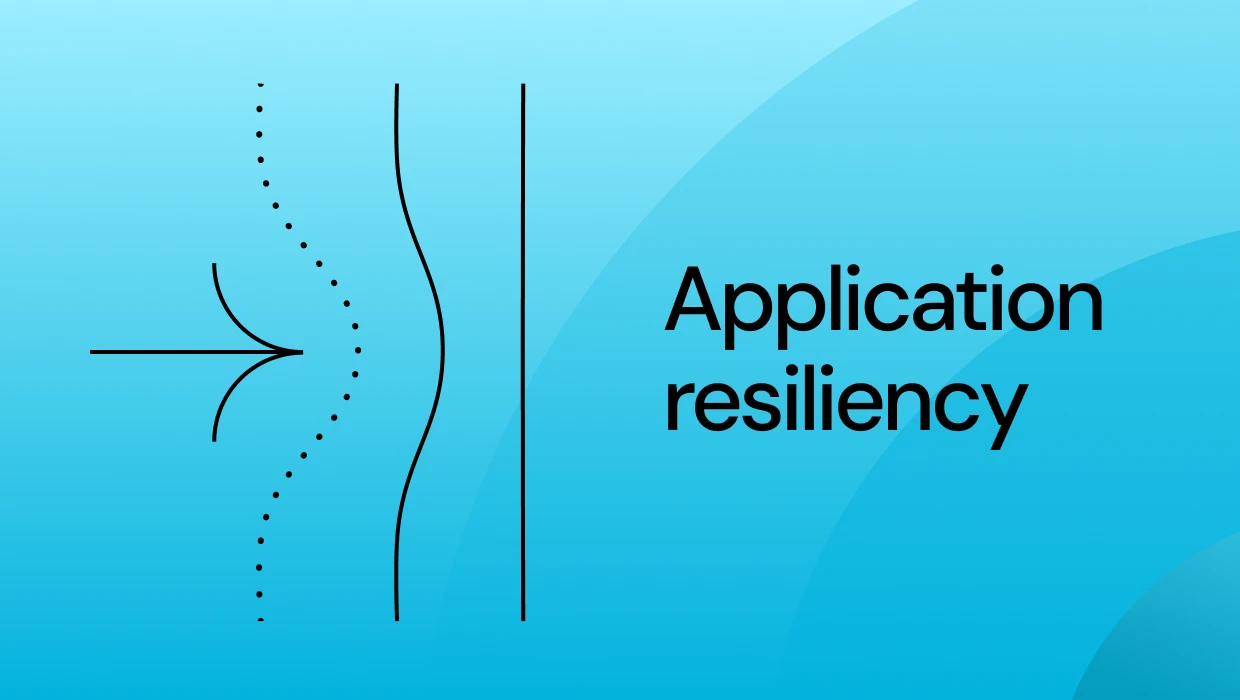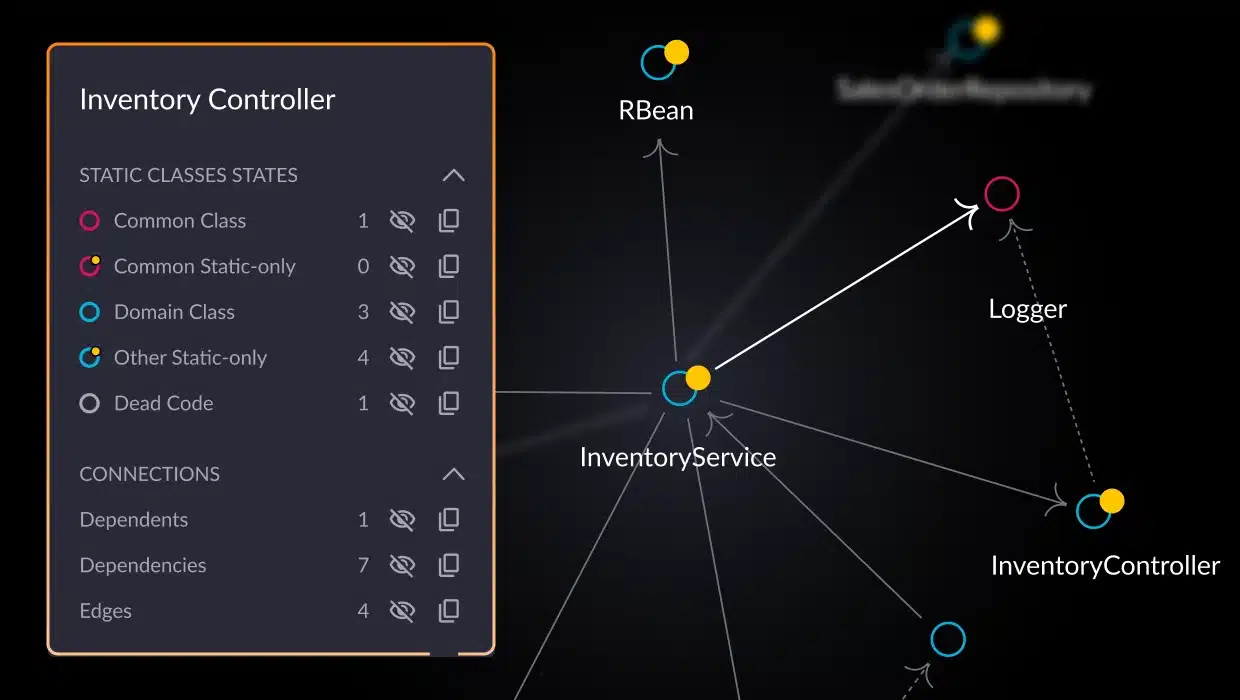Downtime, slowdowns, or unexpected crashes aren’t just technical problems; to a business, they translate into lost revenue, damaged reputations, and frustrated users. A lack of application resilience also leads to frustrated developers and architects who build and maintain the application. Resilient infrastructure and applications protect against these situations and are built to adapt and bounce back from issues like hardware breakdowns, network outages, software bugs, and cyberattacks. In almost all cases of resilient applications, prevention is better than curing problems later.
But how do you make an application resilient? Of course, there are many pieces in the puzzle of application resiliency. Let’s dive in and learn more about the essentials of application resilience – what it is, why you need it, and how to build resilience into your software systems.
What is application resiliency?
Application resiliency ensures that your software can withstand disruptions, adapt to issues, and quickly return to normal business operations. A resilient application intends to minimize the impact on your users and your business if a disruption does occur.
So, what exactly does a resilient application do?
- Handles surprises elegantly: Hardware failures, software bugs, network outages, cyberattacks… resilient applications have strategies in place to deal with such events and keep essential functions running and application data safe.
- Bounces back fast: When issues occur, the goal is to minimize downtime and get the application back on its feet as quickly as possible. Resiliency means critical business operations can swiftly recover to reduce the impact on the business and users.
- Keeps the essentials going: Even if some features are temporarily unavailable due to a problem, a resilient application should still provide core functionalities to ensure business continuity, keep users’ functionality operational, and minimize frustration.
True application resiliency extends beyond infrastructure or code. Analyzing an application’s architecture to identify potential weaknesses, optimize design, and manage complexity proactively is crucial for building robust and adaptable applications. Keeping an application resilient is an ongoing process, requiring various tools, methodologies, and skill sets. When it comes to achieving and maintaining resilience at the architecture level, tools that provide architectural observability capabilities can help identify areas for improvement and simplification.
Why do you need application resiliency?
It’s no surprise, modern users expect constant access and optimal performance within the services and applications they use. Any disruption could mean a loss of revenue and business, temporarily or permanently. This means application resiliency isn’t just a nice-to-have – it’s a business necessity. Here’s why investing in application resilience is essential:
- Minimize downtime and lost revenue: Every minute your application is down can lead to potential lost sales, productivity disruptions, and damaged customer trust. Resiliency helps minimize downtime and allows users to get back online quickly to protect the business’s bottom line.
- Safeguard brand reputation: Frequent outages and frustrating user experiences can tarnish your brand and application’s reputation. Resilient applications ensure that services are reliable, helping to maintain a positive image and customer loyalty as stable and dependable services.
- Adapt to change: User demands shift rapidly, potentially straining the software and hardware that compose a running application. Resilient applications are built to handle these changes, allowing you to scale your services, add new features, and respond to emerging market and usage trends without sacrificing stability.
- Mitigate risk: Whether it be cyberattacks or unexpected hardware failures, potential risks to the stability of an application are everywhere. Resiliency provides an essential layer of security, helping you prepare for and mitigate disruptions before they cause significant damage to underlying infrastructure and reputation.
The bottom line is that application resiliency offers a competitive advantage in an increasingly demanding digital world. By investing in the resilience of your applications, you demonstrate to users that there is a commitment to providing secure, reliable, and uninterrupted services.
How does application resiliency work?
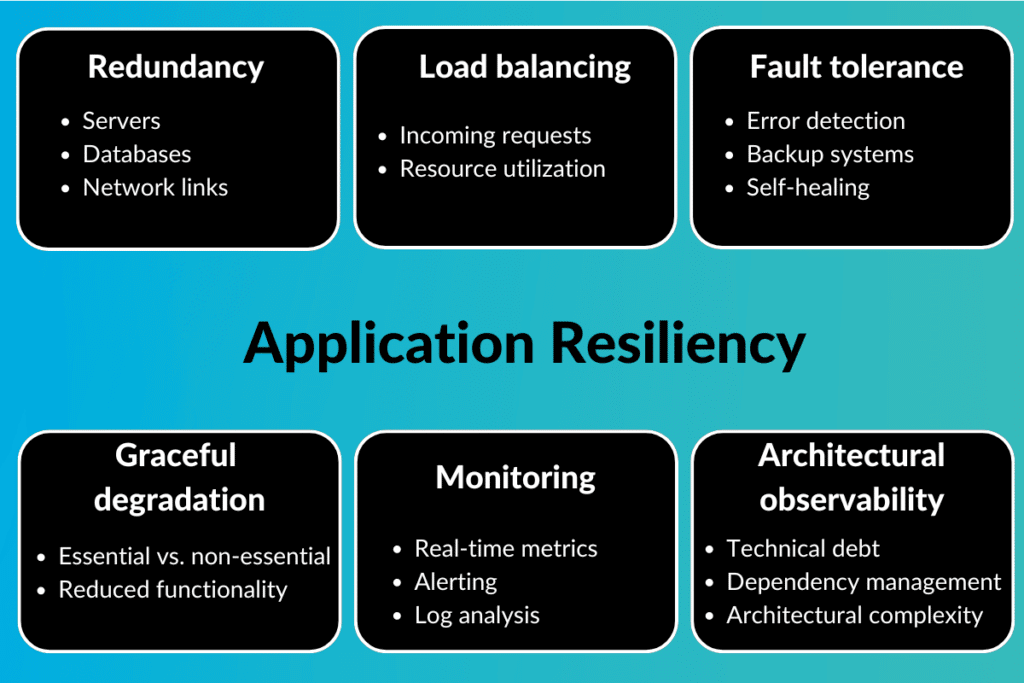
As mentioned, building a resilient application requires a strategic approach that spans multiple facets. This includes multiple areas of application design and maintenance. Let’s look at a few areas to consider when aiming to build resilient applications.
Redundancy
Eliminating single points of failure is a foundational principle of resiliency. Implementing redundancy means having multiple copies and disaster recovery mechanisms for critical components within your system. These include:
- Servers: Deploy applications across multiple servers and data centers, preferably in a high-availability configuration, so that others can take over if one goes down.
- Databases: Replicating data across multiple databases to ensure it remains accessible in the event of a failure. Ensuring data protection and data integrity are maintained at all times.
- Network links: Use multiple network paths to provide alternative routes if a connection gets disrupted.
Load balancing
For high-traffic applications, implementing strategies for distributing the workload across multiple servers is essential for preventing bottlenecks and improving performance. Load balancers can help with:
- Incoming requests: Load balancers intelligently distribute traffic across a pool of servers and even data centers, ensuring no single server gets overwhelmed.
- Resource utilization: This technique helps optimize the use of resources and provides a smoother overall user experience.
Fault tolerance
Resilient applications need to recover from a system failure quickly. Fault tolerance involves automatic failover mechanisms. Fault-tolerant systems make use of:
- Error detection: The system constantly monitors itself for signs of trouble, from hardware malfunctions to software crashes.
- Backup systems: When a failure is detected, the system seamlessly switches to a working backup, minimizing downtime.
- Self-healing: Fault-tolerant systems might even try to fix the failed component, improving their resiliency automatically.
Graceful degradation
When disruptions happen, prioritize your application’s core features to maintain a decent user experience:
- Essential vs. non-essential: Identify critical parts of your application and keep those running smoothly without compromising performance, even if less important features are temporarily unavailable or experience slowness.
- Reduced functionality: Communicate to users clearly with messages explaining any limitations due to the problem. This gives users full transparency and sets expectations, letting them know the problem is being handled.
Monitoring and observability
Problems will happen, but proactive monitoring, visibility, and analysis are crucial to catching problems before they escalate. Using various types of monitoring systems can help to cover you from multiple angles. A few areas to focus on are:
- Real-time metrics: Track key health indicators of your system, like server load, data storage and data replication performance, and network traffic; likely using an application performance monitoring (APM) tool for this.
- Alerting: Set up alerts to notify you of potential issues and enable swift action, potentially within the APM platform mentioned in the last point.
- Log analysis: Analyze logs to identify patterns and trends that can help improve your applications’ long-term resilience. This can help with root-cause analysis and optimizing the system.
Dependency management
Understanding and managing dependencies between domains (or components) within your application is critical to ensuring stability and resiliency of your software architecture. Architects should proactively identify new or altered dependencies to mitigate risks. This focus on dependencies leads to the following:
- Improved domain exclusivity by simplifying interactions.
- Enhanced efficiency and robustness within the application architecture.
- Visibility into both current dependencies and changes over time, aiding in issue anticipation and optimization.
Architects can make informed decisions regarding refactoring, restructuring, and extracting domains by having a clear view of dependencies. This is especially critical when new dependencies emerge, as they impact the overall application architecture. Architects can better plan and execute changes, preparing for future challenges, with this information.
Understanding and managing architectural complexity
Architectural complexity in software has a direct effect on the resiliency of an application and is an essential piece in understanding how application resiliency works as well.
An application’s architectural complexity reflects the effort required to maintain and refactor its structure. It’s computed as a weighted average of several metrics, including:
- Topology complexity / domain topology: Complexity within the application’s structure and the connections between its various elements.
- Resource exclusivity: How exclusively resources (database tables, files, external network services) are utilized – lower exclusivity means higher complexity.
- Class exclusivity: How confined classes are to specific domains – less exclusivity means higher complexity.
As an application is built or evolves, its complexity will change. Awareness of these changes and various architectural events that may impact its resilience is important. If complexity starts to infringe on the resiliency of an application, architects can address heightened complexity by:
- Refactoring code for cleanliness and manageability.
- Promoting simpler design patterns.
- Using software metrics to quantify complexity and set thresholds.
In addition to the monitoring we discussed above, an architectural observability platform, such as vFunction, can monitor architectural changes and trends. This allows architects to proactively address areas of high complexity, helping to ensure that application resiliency stays at the top of their minds.
All of these points show that application resilience is an ongoing process. Design for failure, build with scale in mind, test thoroughly, monitor constantly, and always be ready to learn and improve the application’s underlying architecture.
Negative impacts when lacking application resiliency
Neglecting application resiliency has far-reaching consequences that damage your business on multiple fronts. Here’s a breakdown of the key risks:
- Downtime, user frustration, and damaged reputation: Extended outages, frustrated customers, and lost revenue go hand-in-hand with non-resilient applications. These incidents severely damage your brand’s reputation and customer loyalty.
- Disrupted operations and financial losses: Unplanned downtime disrupts critical business processes, leading to costly inefficiencies, recovery expenses, and potential penalties.
- Missed opportunities and increased vulnerability: Without resilience, scaling, adding features, and responding to market changes becomes daunting. Additionally, your applications become more vulnerable to cyberattacks, risking data loss and further reputational harm.
A lack of application resiliency exposes your business to lost revenue, operational disruptions, and heightened security risks. Investing in resilience protects your business from these costly scenarios and ensures that applications can meet customer demands.
Let’s look at some real-world examples to illustrate the impact (both positive and negative) that application resiliency can have on businesses.
Examples of application resiliency
Many companies succeed, while others struggle with application resiliency. Let’s quickly look at a few organizations that highlight application resiliency’s positive and negative aspects.
Success stories
- Netflix: Their microservices architecture and “chaos engineering” approach ensure minimal disruption for viewers, even when components fail.
- Amazon: Scalable infrastructure, load balancing, and robust failover mechanisms allow them to handle massive traffic surges, like Prime Day, without interruptions for shoppers.
Cautionary tales
- Healthcare.gov: The initial launch suffered from insufficient redundancy and scalability, leading to widespread frustration for users.
- Online banking outages: These disruptions, often due to issues like inadequate load testing or untested failover, highlight the criticality of resiliency in sensitive applications.
These examples underscore the immense competitive advantage that resilient applications provide. They foster a seamless user experience, even in the face of technical issues, building trust and loyalty at scale. Conversely, neglecting resiliency can lead to lost revenue, reputational damage, and frustrated customers.
How vFunction can help you with application resiliency
Building resilient applications isn’t just about reacting to failures but proactively addressing potential architectural issues at the earliest possible stages in the software development lifecycle (SDLC). This approach aligns perfectly with the “shift-left” philosophy, which has proven highly effective in application security practices.
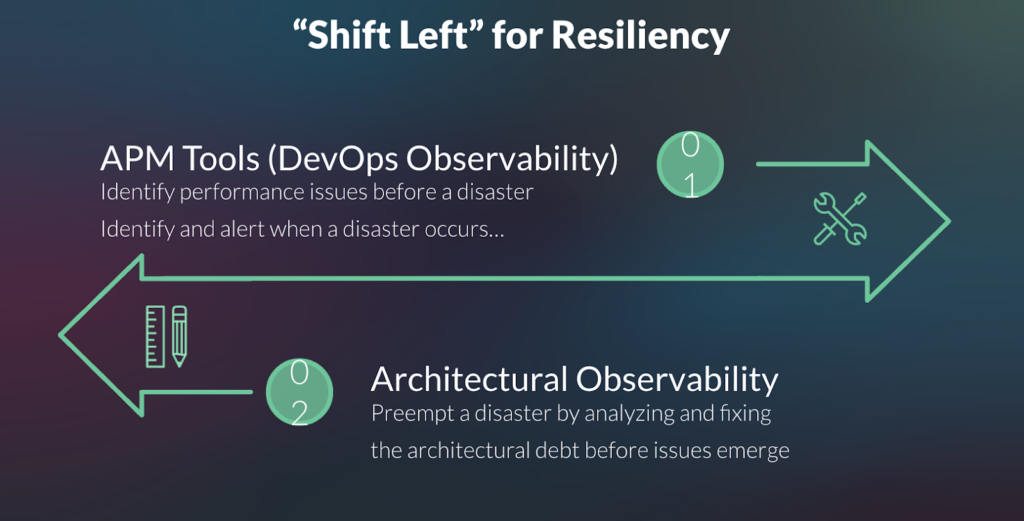
We can all agree that traditional Application Performance Monitoring (APM) tools are helpful in identifying issues with application resiliency, enabling you to react quickly and minimize downtime. But, compared to this reactive approach, vFunction’s focus on architectural observability goes further and brings application resiliency into a more proactive light. Here are a few areas vFunction can assist:
Tracking critical architectural events
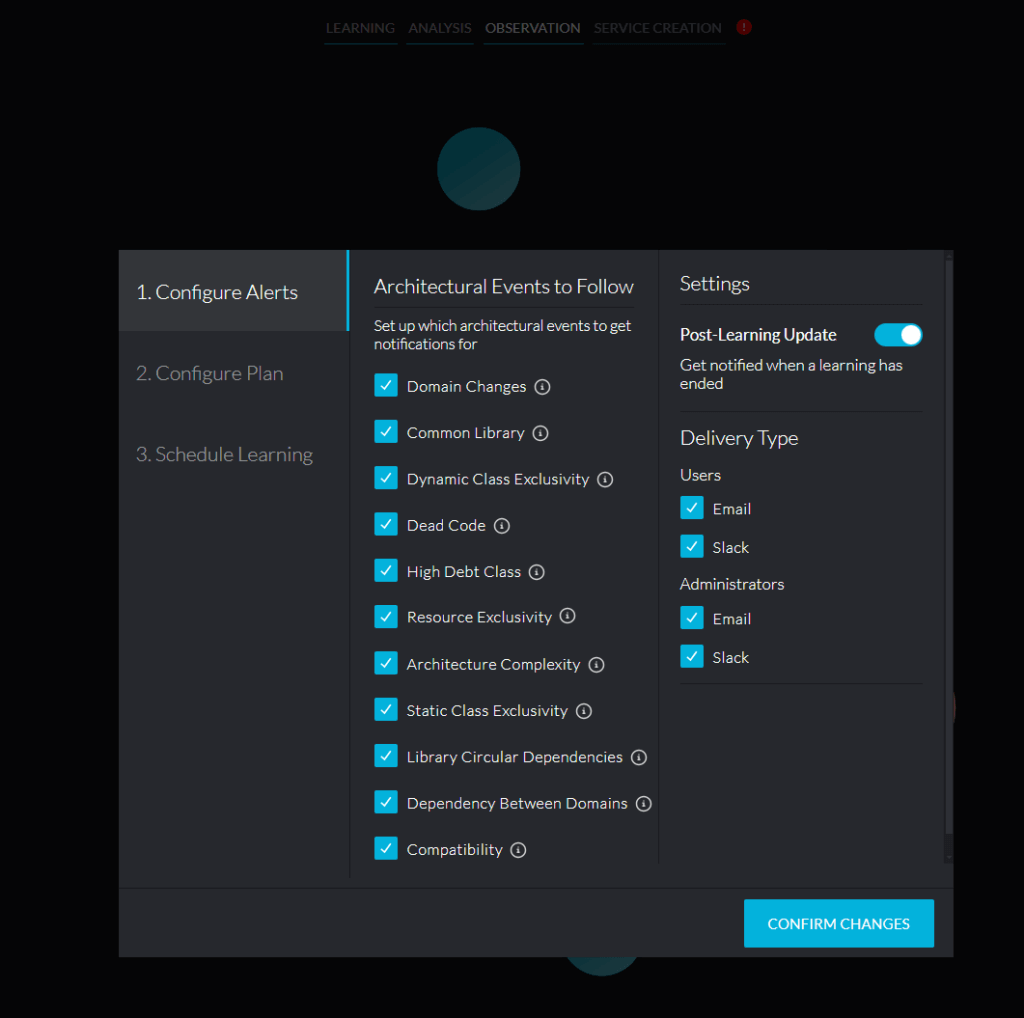
vFunction continuously monitors your application’s architecture and triggers alerts based on events that directly impact resiliency, such as:
- Domain Changes (Added/Removed): Understanding the addition or removal of domains helps architects assess evolving requirements and potential complexity increases.
- Architectural Complexity Shifts: Pinpointing increases in complexity allows for proactive simplification to reduce the risk of failures.
- New or Altered Dependencies: Identifying changing dependencies between components promotes domain optimization and robust design.
Prioritizing resiliency-focused tasks
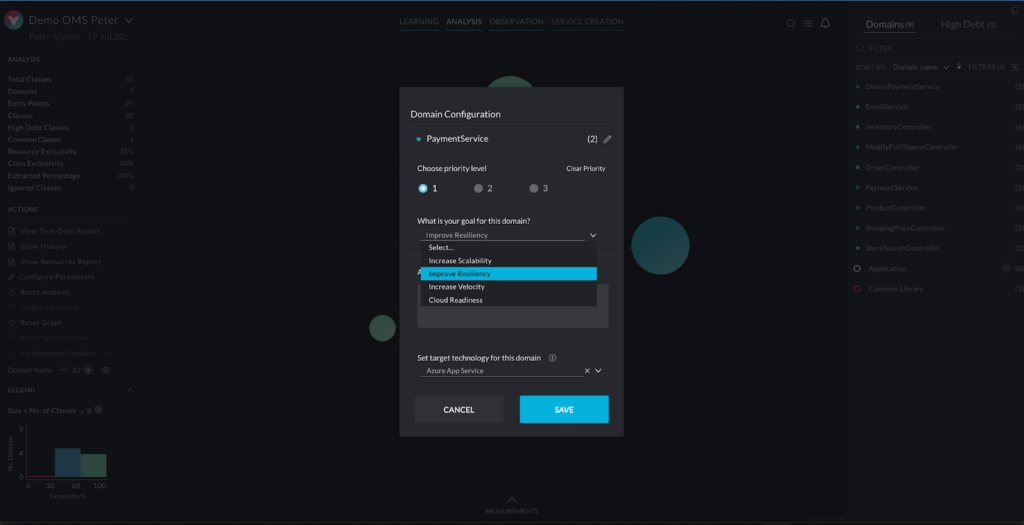
vFunction doesn’t just highlight issues; it prioritizes tasks to improve your application’s resilience. This includes:
- Recommendations to address potential weaknesses in your architecture.
- Prioritized Actions to guide refactoring efforts and streamline complexity reduction.
- Integration with tools like OpenRewrite to assist in automating specific code improvements.
By empowering you to identify and resolve potential architectural weaknesses early in the development cycle, vFunction helps you build more resilient applications from the ground up. This “shift-left” approach minimizes the costly consequences of downtime and enhances the user experience.
Conclusion
With the demands of modern users and businesses that depend on your applications, downtime isn’t merely inconvenient; it’s a significant liability. Implementing measures to ensure application resiliency is the key to guaranteeing that your services remain available, reliable, and performant, even when the unexpected strikes. By understanding the core principles of resiliency, its benefits, and the risks of ignoring them, you can build scalable and reliable applications that users can depend on.
Investing in application resiliency isn’t about eliminating all problems; it’s about empowering your applications to swiftly restore operations, minimize disruptions, and maintain a positive user experience when outages and other adverse events occur. A resilient business must be built on top of resilient applications and resilient applications must be built on top of resilient software architecture. There’s no getting around that simple fact.
Ready to take your application resiliency to the next level? Contact us today to learn more about how vFunction can help you build scalable and adaptable applications with the power of architectural observability.



